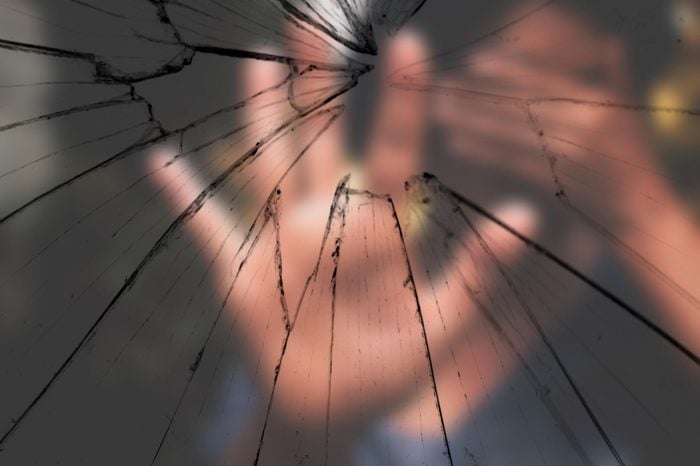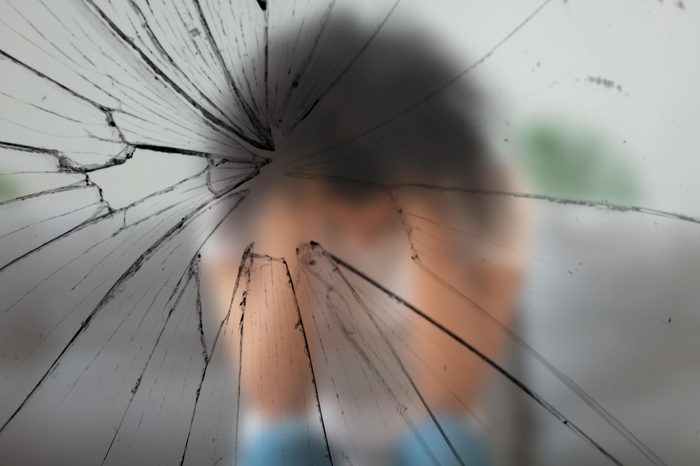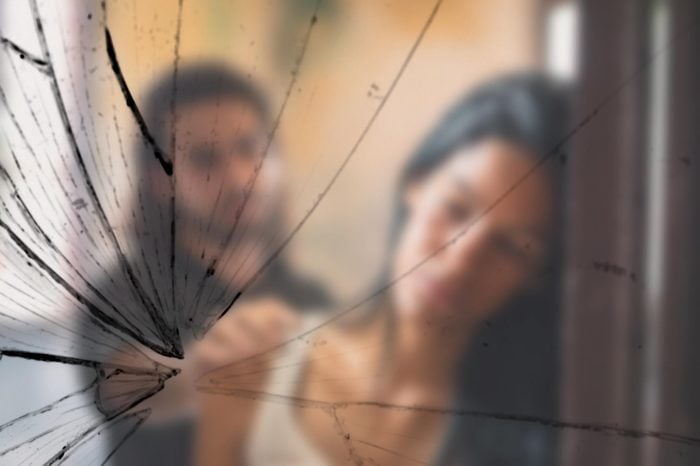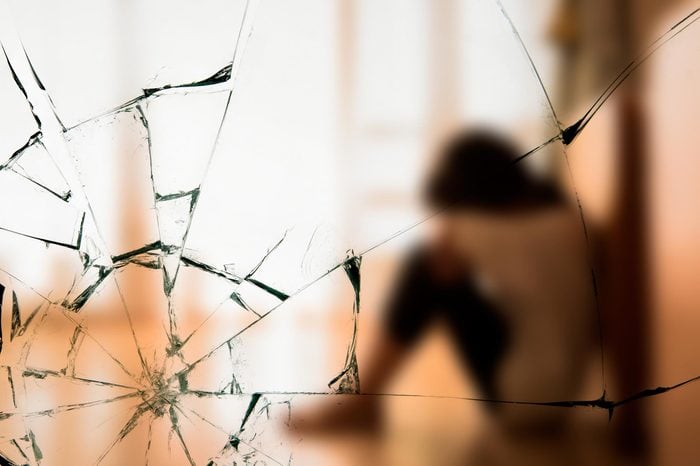
Nearly every two seconds someone is abused in the United States
On average, 24 people per minute are victims of rape, physical violence, or stalking by an intimate partner in the United States—more than 12 million women and men over the course of a year, according to the National Domestic Violence Hotline. And it happens to people of all ages, races, and walks of life—just one of the 10 things survivors of domestic abuse want you to know.

Domestic violence is so much more than a black eye
The image many people have is of a woman who has been physically beaten by her partner, but domestic violence encompasses so much more. It includes rape, sexual assault, robbery, and aggravated and simple assault committed by intimate partners, immediate family members, or other relatives and victims can be men, women, children, people with disabilities, or the elderly, according to the U.S. Department of Justice.

Someone could be being abused right in front of you and you might miss it
Think you’d know a domestic violence situation if you saw it? Friends and family members are often in the dark about their loved ones’ suffering, says Kelli Dillon, a domestic violence survivor, advocate, and counselor in Los Angeles. “Domestic violence victims are often groomed to ‘get in line’ with subtle body language cues, like a certain look or a boyfriend tapping his feet while he’s otherwise friendly and relaxed,” she explains. “Cues can be very specific to an abuser or a couple and can be so specific and subtle that they can occur in public without anyone else understanding.”

Only one in three victims get medical treatment for their injuries
Domestic violence is an inherently violent act yet two-thirds of victims never see a doctor, go to a hospital, or receive any professional medical care for their injuries, according to current data published by the U.S. Department of Justice. In some cases, it’s because they are prevented from getting help from their partner but in other cases, it may be due to feelings of shame related to being abused.

A gun increases the risk of someone being killed by 500 percent
How do you take an already dangerous situation and make it deadly? With a gun. With the national conversation on guns and their role in school shootings and other mass attacks, the impact on domestic violence should not be overlooked. In a domestic violence situation, the presence of a gun increases the risk of homicide by 500 percent, according to a study published in the American Journal of Public Health.

Nearly 8 in 10 victims are women
The vast majority of domestic violence was committed against women and girls, with females accounting for 76 percent of victims, according to the U.S. Department of Justice stats. One in four women will experience domestic violence in their lifetimes, with women aged 18 to 35 being at the highest risk. However, this shouldn’t discount the 24 percent of victims who are men and boys—seeing this type of violence as “just a women’s problem” can make males feel even more ashamed and less likely to speak up about their abuse.

Pregnant women are twice as likely to be abused
Pregnancy makes a woman uniquely vulnerable and an already volatile relationship can escalate to abuse quickly. Pregnant women are twice as likely to be murdered and abused than non-pregnant women of the same age, according to data published in the Journal of Women’s Health. Three to 9 percent of all pregnant women will experience domestic violence during their pregnancy, which can have terrible health consequences for both mother and baby, they added. It’s imperative everyone learns the 10 early warning signs of an abusive relationship.

Domestic violence isn’t about sex or work or dishes
Abusers give a variety of reasons for lashing out at their victims but the bottom line is that domestic violence is always about power, says Kandee Lewis, executive director of Positive Results Corporation and an expert in interpersonal and sexual violence. Abusers seek to control and manipulate their victims through mental and physical violence.

Not all domestic abuse is physical
Domestic violence is a huge problem, affecting one in four women and one in ten men, but domestic abuse is an even bigger problem. Over 43 million women and 38 million men will experience mental or emotional abuse by an intimate partner in their lifetime, according to data from the Centers for Disease Control and Prevention (CDC). This type of abuse can include name-calling, belittling, gaslighting, public shaming, and any of these other 9 subtle signs of emotional abuse.

Half of all murdered women are killed by a boyfriend or husband
Sixteen percent of all murder victims were killed by an intimate partner, usually a current or ex-girlfriend or -boyfriend, or -spouse. However, fully half of all female homicide victims in the United States are killed by a current or former male intimate partner, according to the CDC. For more sobering facts, check out these 23 things experts wish you knew about domestic violence.

Domestic violence can cause long-term health problems
Bruises or broken bones are a tiny fraction of the overall health effects of experiencing domestic violence. Victims of domestic violence, especially at the hands of their partner, are at a higher risk for cardiovascular, gastrointestinal, reproductive, musculoskeletal, and nervous system conditions, many of which are chronic in nature, according to the CDC. In addition, survivors experience a higher rate of mental health problems such as depression and posttraumatic stress disorder (PTSD). Mental illness can be subtle, makes sure you know the 13 signs of PTSD.

Victims often believe they deserve the abuse
“Blaming and shaming the victim makes them feel responsible for their own attack and makes the abuser no longer accountable or responsible for their actions,” Lewis explains. “This makes the victim question everything they do and eventually they lose perspective on their value in the relationship, and as a person.” This makes the victim less likely to seek help or even see themselves as a victim, she adds.

Risk-taking is a subtle sign someone may be being abused
Victims of domestic violence are more likely to engage in risky behaviors like smoking, binge drinking, unsafe sex, gambling, and drug use, according to the CDC. So if someone in your life suddenly begins to take risks they wouldn’t normally, it is worth talking to them about their situation at home. You should also be on the lookout for the signs that someone is being financially abused.

Nearly 80 percent of attacks occur at the victim’s home
Unfortunately, it’s much easier to abuse someone without getting caught if you do it in private and 77 percent of all domestic violence assaults occur in or near the victim’s home, according to the U.S. Bureau of Justice. Not only does this have physical consequences but it is also mental abuse by taking away the one place where someone should always feel safe.

Pets can be victims, too
Not only can dogs and cats get caught up in domestic abuse—and they are with alarming frequency, as the Banfield Foundation reports that research suggests up to 89 percent of domestic violence victims who own pets say their abuser has either threatened, injured, or killed the family pet—nearly half of all victims of abuse say they stay in the relationship because of fear for the safety of their pet. Only a mere 6 to 10 percent of domestic violence shelters allow animals.

Boys who witness domestic violence are twice as likely to become abusers
Seeing a parent abuse their spouse or partner has a powerful effect on children. Boys who witnessed domestic violence in their home were twice as likely to abuse their own partners and children when they became adults, according to a study published in the Journal of Emotional Abuse. Read this harrowing account of what it’s like growing up with domestic abuse.
